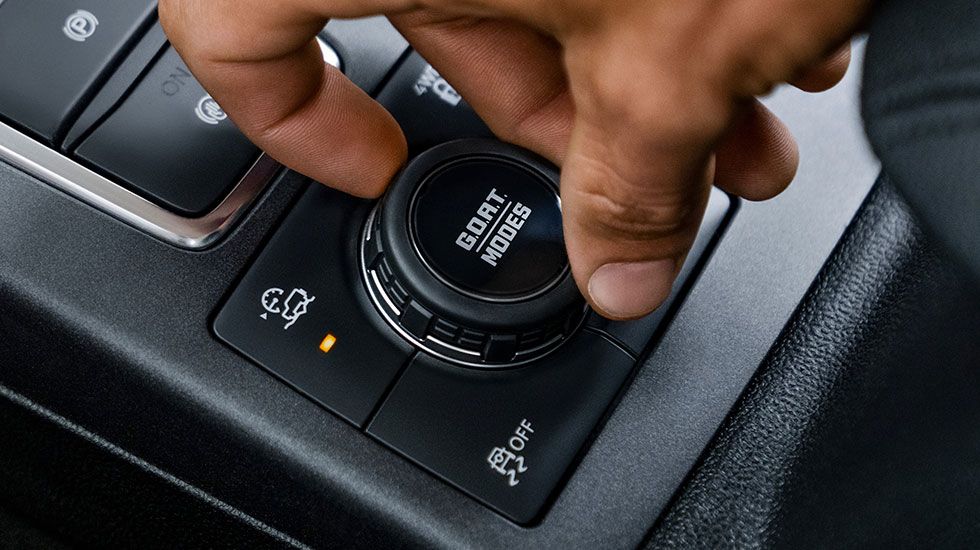
Ford Ranger: Experience Design Content
Brief
“Deliver novel vehicle content that delivers enhanced user experiences”
Approach
- Collated and absorbed all insights regarding product positioning and spectrum of driver behaviours – allowed the ‘user research to continue to live into product development process’.
- Create proposition designs for core engineering to push innovation and test feasibility.
- Partnered with Product Marketing and Program management; select and drive product development towards commercially and customer favourable outcomes.
- Deliver content in partnership with Vehicle Engineering Design, Manufacturing and Marketing teams
Ford Motor Company 
Year
Role
Team
2017-2019
Senior Experience Designer
User Experience
Vehicle Engineering

Context
The creation of D-Ford (Ford Experience Design) signals the recognition that the “numbers war” is over – and to truly differentiate ourselves from our competitor, we focus intensely on the user and their deliver next generation experiences.
Automotive Context
The truck segment is a highly competitive arena as it is highly lucrative due to strong consumer demand for versatile, durable vehicles that cater to both personal and commercial needs.
These trucks generate substantial revenue for manufacturers, often boasting high profit margins due to their popularity and customizable features.
Their importance to the industry lies in their consistent sales performance, brand loyalty, and contribution to overall profitability, driving innovation and economic stability within the automotive sector.
Evolution of industry
The market is highly competitive due to the diverse range of offerings, technological advancements, and significant brand loyalty among consumers, driving manufacturers to continuously innovate and improve their trucks to capture and maintain market share.
Ford recognised that it is nearing the end of “the war of numbers” –
“What got us here, won’t get us to the future”
New buyers will be judged on vehicle experiences, opposed to the “increasing performance numbers” driven by competing manufacturers that the industry has been built on for decades.
D-Ford was created to accept the challenge that by deeply understanding the user, worthwhile human-centred innovation would create the next generation of features that would reliably and excitingly attract new owners and keep existing owners loyal to the brand.
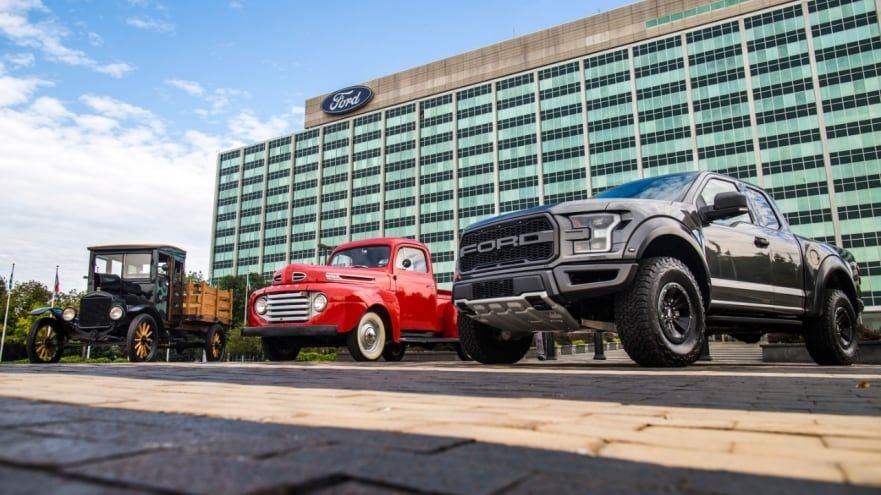
2021 Ford Ranger
These features reflects Ford’s commitment to user-friendly design and functionality, catering to both personal and professional needs by improving the overall utility and convenience of the Ranger.
Enhanced Cargo Management
- The Ford Ranger boasts several cargo management features that enhance its versatility and usability for carrying various loads:
- Flexible Rack System: Allows for easy transport of long items like ladders or canoes. It combines a foldable roof rack on the cab with a sliding roll hoop over the bed, securely holding awkward items while maximizing rear cargo space.
- Adjustable tie down points and bed rails: Offering versatility and convenience for securing cargo of various sizes and shapes, tie-down points and rails can be easily repositioned and accept expansion, ensuring items remain stable during transit.
Design details:
- Activating the tailgate area of the truck was paramount – every region used the tailgate slightly different but it was the centre of gravity for static vehicle experiences.

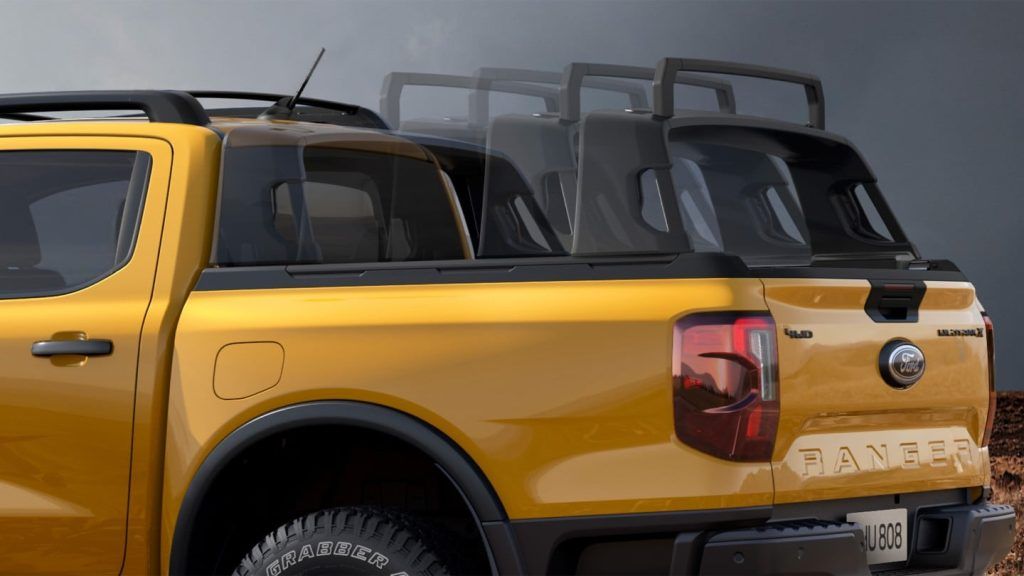
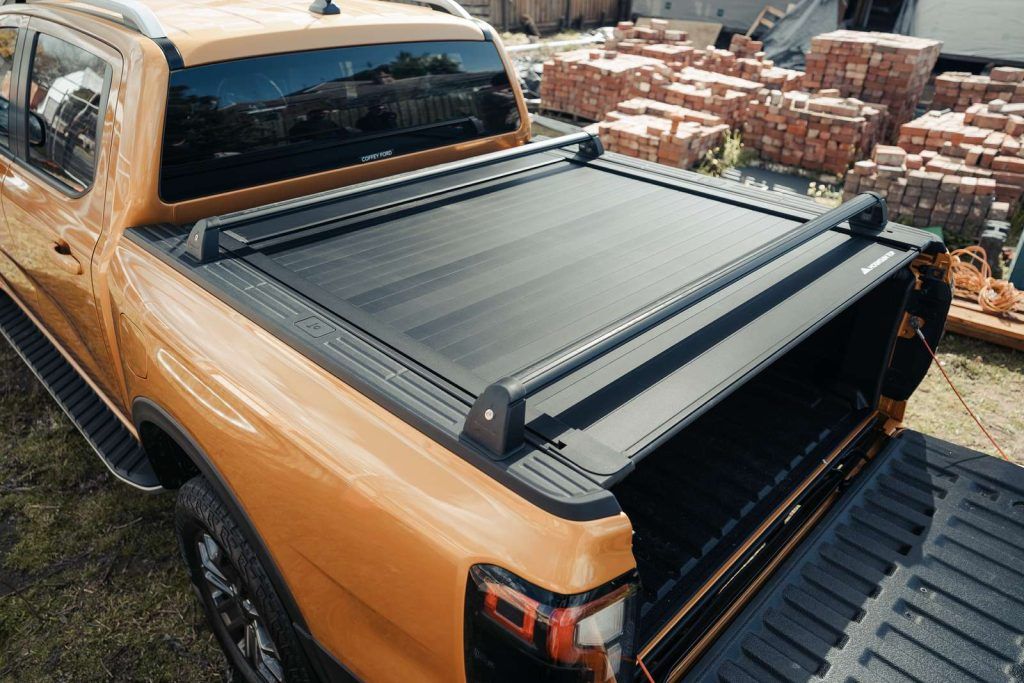
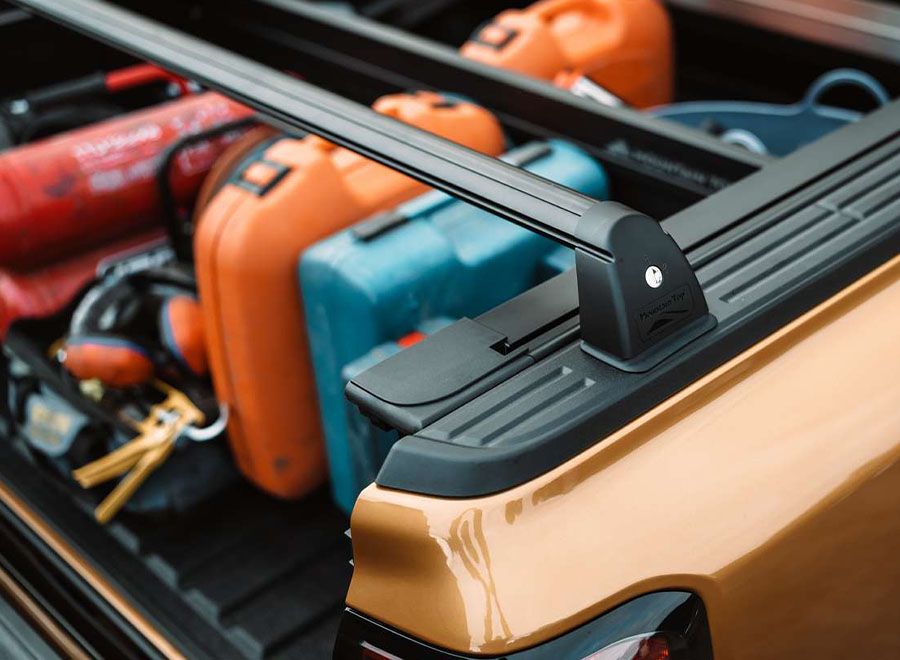

Integrated Rear Step
(aka Sophie Step)
- The Ford Ranger’s integrated rear step is a practical feature designed to enhance accessibility to the truck bed.
- This step is built into the rear bumper, providing a convenient and sturdy foothold for users to easily step up and reach into the cargo area.
- The integrated rear step is particularly beneficial for loading and unloading, making it easier to manage heavy or bulky items.
Fun facts:
- Internally we nicknamed the integrated rear step as the “Sophie Step” after our shortest member of the team kept complaining that getting onto the tailgate and load bed was difficult, even when using the wheel as a step to get in.
- We found in APAC that her height also represented a significant people in our Asian markets, and was also a well known friction point of ownership for many people.
- The step is still quite high due to vehicle departure angle requirements needed for off-road capability (the maximum angle of road before the rear strikes the ground), but is enough to be able to scramble into the load bed.
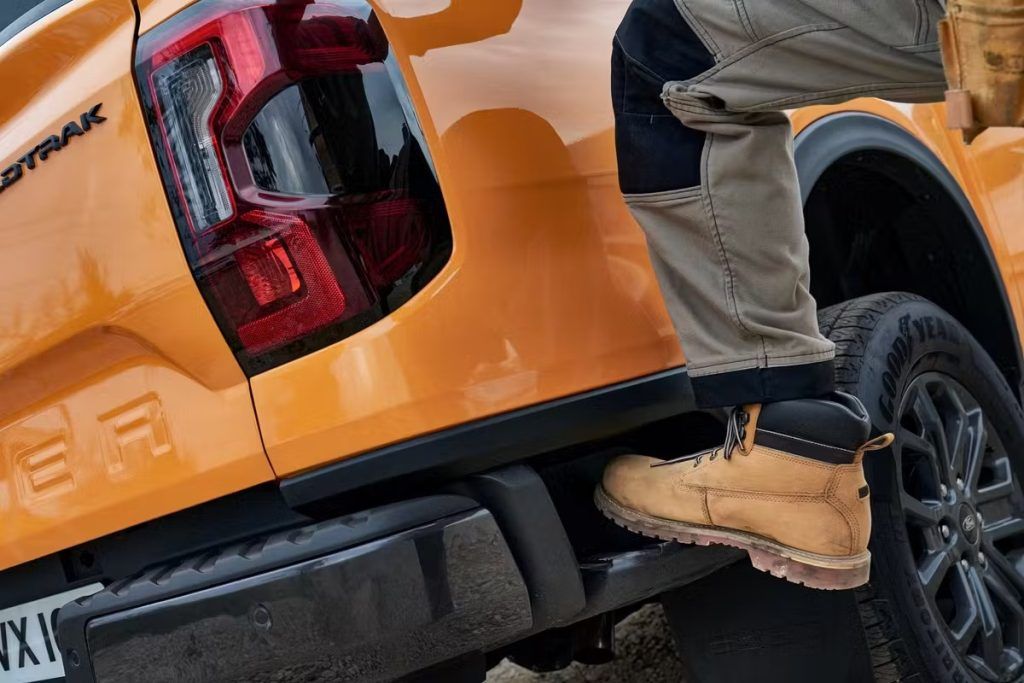
Tailgate Work Surface
- The Ford Ranger’s tailgate work surface is a versatile feature designed to enhance the functionality of the truck for work-related tasks and outdoor activities.
- Flat and Stable Surface: The tailgate can be laid flat to create a stable platform, ideal for tasks requiring a level work area.
- Built-in Measurement Tools: Some versions may include built-in rulers or measurement markings, facilitating precise work without the need for additional tools.
- Integrated Features: Slots and indentations designed to hold smartphones, tablets, or cups, ensuring that essential items stay in place while working.
- Enhanced Durability: Made from high-quality materials to withstand heavy use and exposure to the elements.
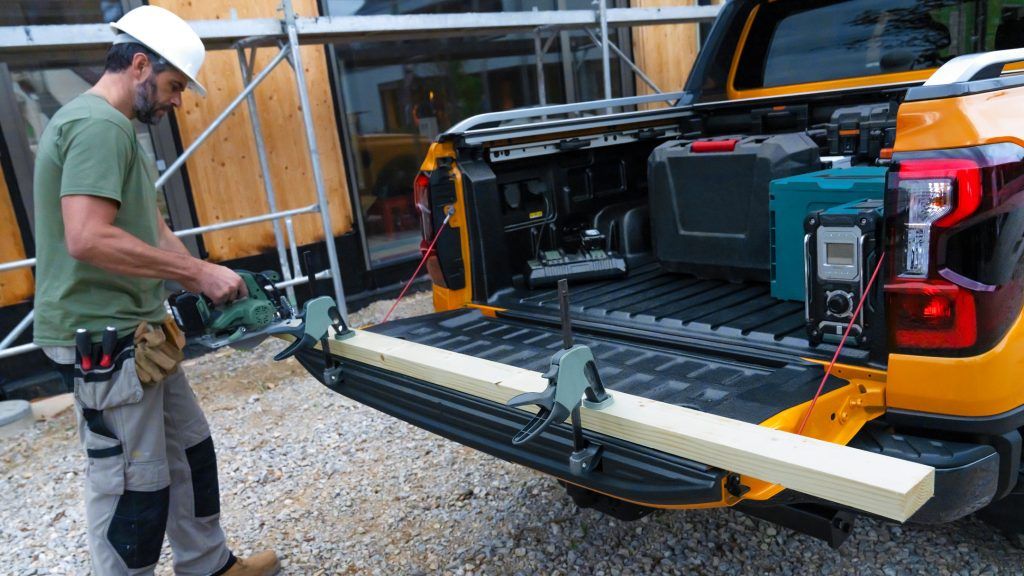
Power to the Box
- “Power to the Box” provides in-bed power outlets (12V and 110V/240V), ideal for using power tools, charging devices, and running equipment.
- Strategically placed for easy access, these outlets enhance the truck’s utility for both professional and recreational use,
Design details:
- Ranger’s PttB solution was bespoke designed for due to its unique powertrain configuration that wasn’t shared with F150.
- A multidisciplinary approach encompassing experience design, vehicle engineering, marketing, and vehicle safety was essential to ensure both satisfaction and safety.
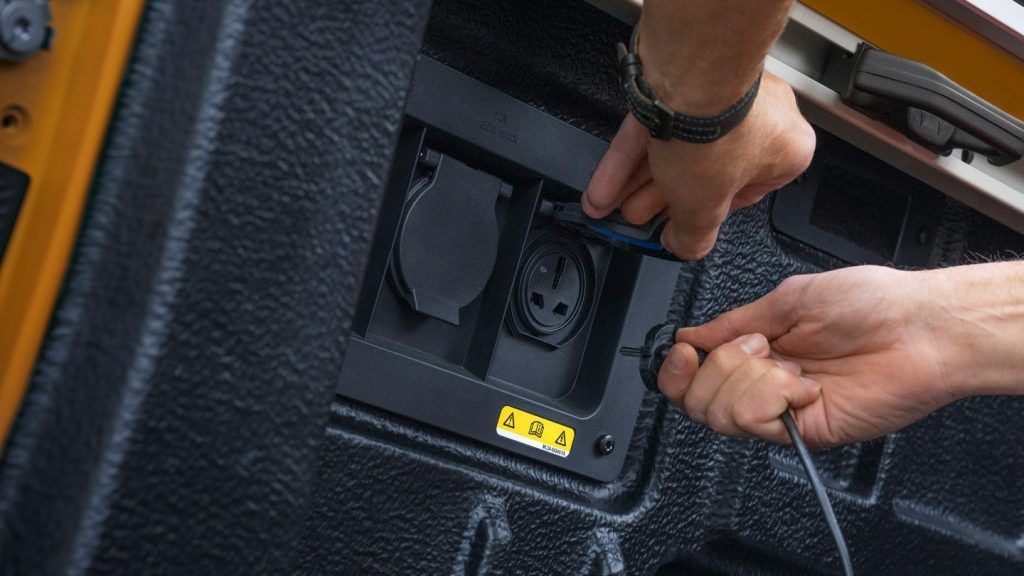
Zone Lighting
- The Ford Ranger’s zone lighting feature is designed to enhance visibility and convenience by providing comprehensive exterior illumination around the vehicle.
- Multiple Lighting Zones: The system divides the exterior into several zones, including the front, sides, and rear, allowing users to illuminate specific areas as needed.
- User Control: Lights can be controlled individually or simultaneously via the truck’s infotainment system or a mobile app, providing flexibility and convenience.
- Enhanced Visibility: Ideal for night-time activities, work sites, or camping, zone lighting improves visibility around the vehicle, increasing safety and functionality.
- Energy Efficient: The lighting system is designed to be energy-efficient, minimizing battery drain while providing ample illumination.”
Design details:
- We experimented with dynamic lighting (tracking the user and illuminating around them) but learnt from user testing that users felt that dynamic lighting became annoying as it messed with their night vision as lights dipped/brightened
- Originally a global solution was desired to reduce plant and R&D complexity, but with 180+ markets with subtly different design rules, we diverged to cater for markets and vehicle lighting configurations
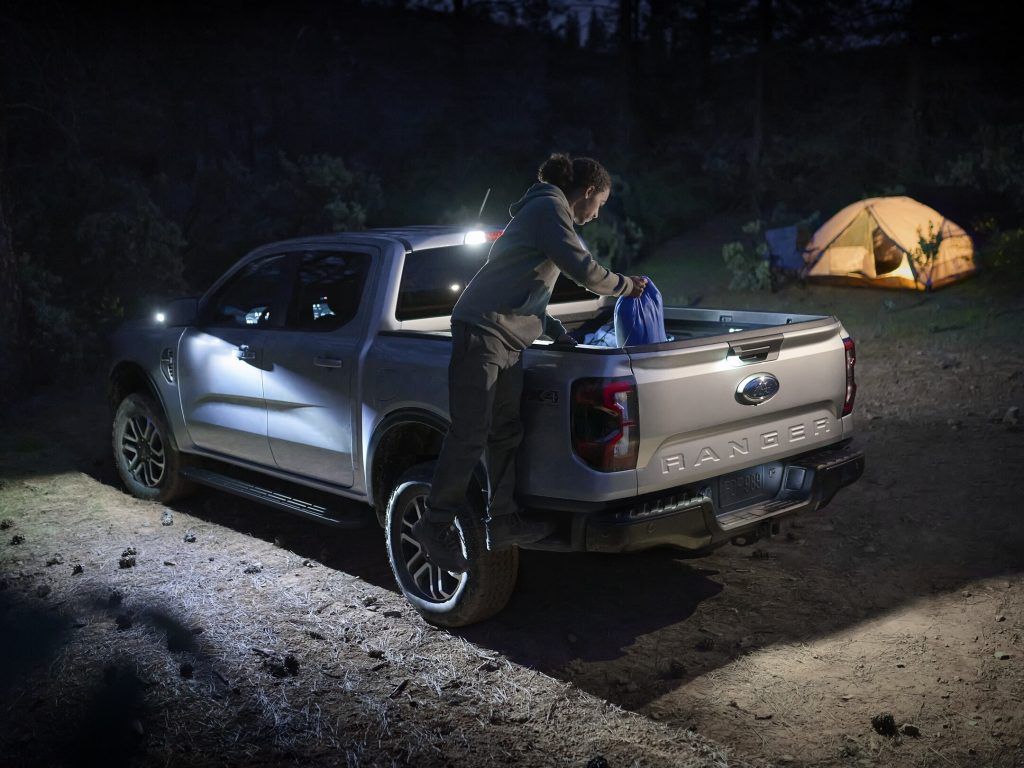
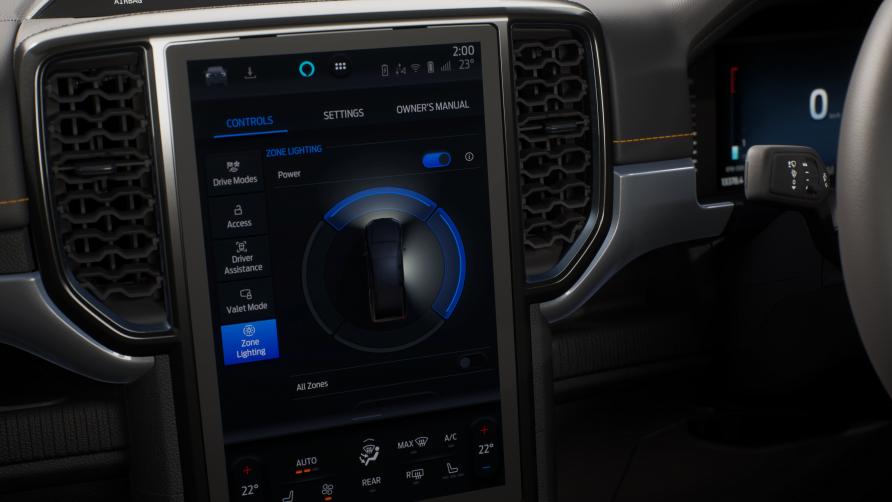
Trail Control
- Ford Trail Control on the Ranger is an advanced off-road system designed to enhance driving performance on challenging terrains. Key features of Trail Control include:
- Off-Road Cruise Control: Trail Control functions like off-road cruise control, allowing the driver to set and maintain a steady speed while navigating rough terrain, leaving them free to focus on steering.
- Speed Management: The system automatically adjusts power and braking to each wheel independently, providing optimal traction and control on uneven surfaces.
- User-Friendly Interface: Activated through the vehicle’s controls, Trail Control is easy to use and can be adjusted to suit different off-road conditions.
- Improved Safety and Stability: By managing speed and traction, Trail Control enhances stability and safety, reducing the likelihood of wheel slippage and improving overall vehicle handling in off-road environments.
Design details:
- Trail Control was a project I spearheaded onto the 2019 Ford Ranger – development story here

